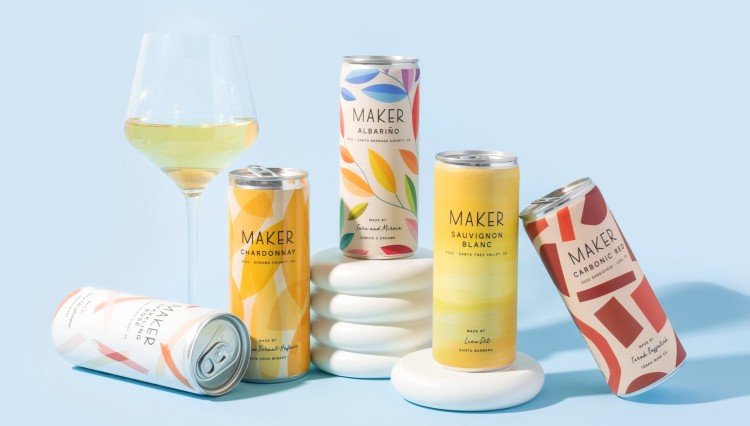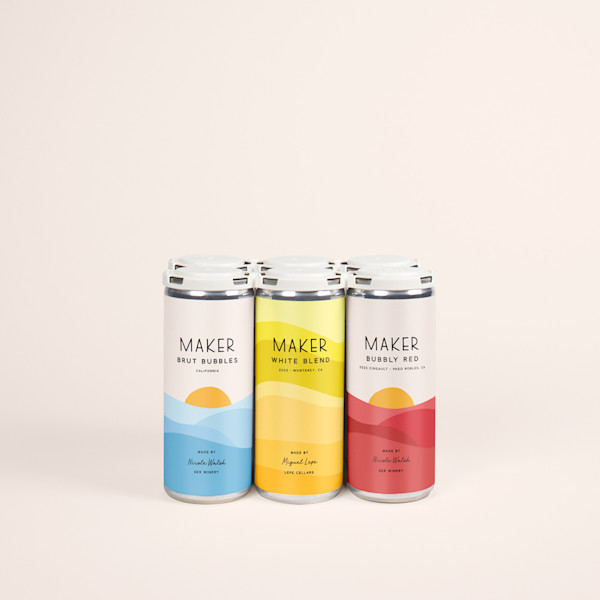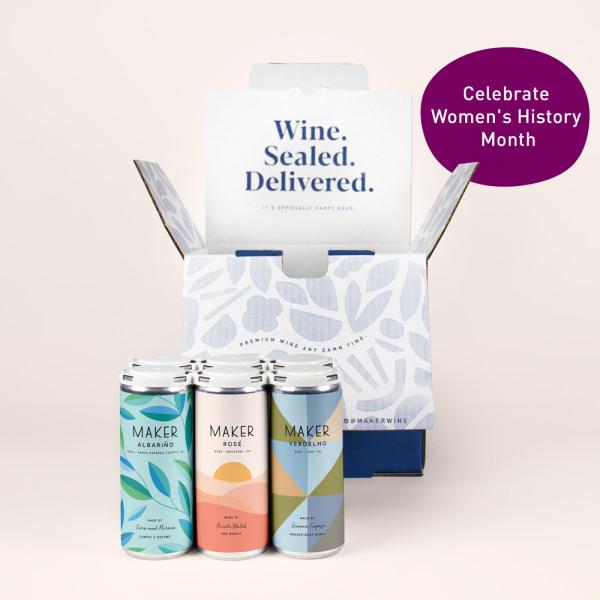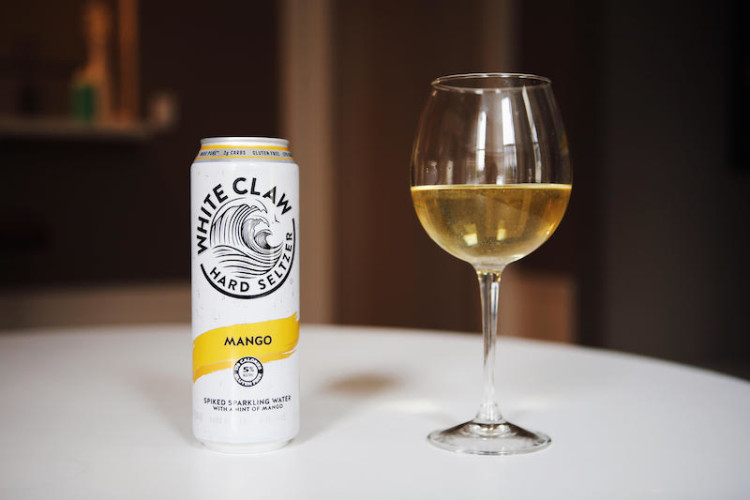Wine School
Canned Wine FAQs
Everything you’ve always wanted to ask about wine in a can.

By Sarah Hoffman
October 16, 2019


Shop Canned Wine
Try some of Maker's best-selling canned wines in our Best Sellers Mixed Pack. It's got red, rosé, and a stellar sparkling white wine.
Starting a canned wine company, you could say I’ve become a little can-obsessed. I linger a little too long in the canned soup aisle, friends text message me photos of cans they think I’ll like, and I have a habit of walking into random corner stores to scope out their cans.
Why am I such a crazy can lady? At Maker, we love cans because they’re single-serving (no more wasted half-empty wine bottles), portable (discreetly throw ‘em in your bag), and recyclable. They’re also light – three of our cans (equivalent to one bottle by volume) weighs less than half the weight of a bottle of wine – meaning we can ship them to you economically. While we know the can revolution is coming for wine, we often get questions from the can-curious. Below are answers to the most frequently asked questions we get about canned wine.

Try women-owned wine
Enjoy a different can of wine for every day of the week, with a rest day buffered in. Each can is made by a different female winemaker or female-led winery we love.
1. Does the can affect the taste?
No! Cans have come a long way from the 60’s. Like beer and soda cans, modern wine cans don’t transmit an aluminum taste, and have a protective coating or liner. Several blind tastings have been done comparing the same wine from bottles and cans (including our own study), and test groups have not been able to detect a reliable difference between the two formats.
You might be surprised to learn that cans are actually better for most wines than glass bottles. There’s no possibility of the wine being “corked,” which spoils 2-3 % of all wines. There’s also no risk of oxidation or light penetration, which can lead to that heartbreaking musty, cardboard taste.
2. How much wine is in each can?
Cans come in many different sizes, from teeny 187 ml cans to monster 500 ml cans. Most canned wines are 375 ml (soda can size), which you may be surprised to learn is ½ of a bottle of wine. Don’t drink that like a Bud Light or you’re going to have a rough time.
While the majority of wines on the market are the soda can size, research shows that consumers overwhelmingly prefer the smaller, thinner 250 mL size cans that we’ve chosen to use for Maker. In a recent study, of 1,700 consumers surveyed, 43 percent preferred the 250ml can, but only half of wineries who use cans offer that size. In contrast, only 21 percent of consumers favored the 375ml format, while 42 percent of producers adopting cans used it.
Each 250 mL can is ⅓ of a bottle of a wine, which is equivalent to 1.7 glasses of wine (or what I like to call a “nice little Saturday”). It’s the perfect amount of wine to open solo for a little self-care or to share with a special someone over a nice meal.

3. How do I serve canned wine?
Canned wine (and bottled wine for that matter) is at it’s best when poured into a glass and served at the appropriate temperature. Just like with craft beer, whisky, or any other craft beverage, pouring into a glass allows you to fully experience the aroma, which enhances the flavor and your sensory experience of the beverage.
If you’re at home, pour it in a glass. But if you’re outside or on-the-go, drinking out of the can is just fine too, we’re not snobs about it.
4. How do I store canned wine?
For storing canned wine, treat it as you would any other premium wine. Store it in a cool and dry place – a good general guideline is “chilled” for whites and rose (~55 degrees) and closer to room temp (~65 degrees) for reds.
If you want to throw them in a cooler at a picnic and they are a little cooler than the “rulebook” temp, that’s ok too. You do you.
5. Is the can recyclable?
You betcha. The cans, labels, and even the boxes we send them to you in are 100% recyclable. Cans also have a smaller carbon footprint than glass bottles. Why? Aluminum cans are one of the most recycled materials on the planet. In 2011, a wine industry report revealed that 70% of wine bottles ended up in landfills. Drink canned wine, save the world (our first T-shirt slogan?).
6. How long is the wine good for? Can you age it?
We can our wines at the time they are meant to be consumed, which may be right after production for a rosé or after years of barrel-aging for a cab. While the can will remain drinkable for much longer, we think flavors and aromatics of the wines are best within 18 months of the canning date, which is stamped right on the bottom of the can. As our partner winemaker Chris says, “This is wine meant for the here and now. Not wine to be hoarded in someone’s basement.” We can small lots from a rotating selection of small producers, so you're always able to try something fresh off the canning line.
Any more burning canned wine Q’s? Check out the full FAQs section of our site or send me an email at hello@makerwine.com and I'll do my best to answer them.
Recommended for you
Start-up Life
How We Pick Our Wines
Wine School
The 2020 Canned Wine Report
About Maker
They make it.
Maker partners with best-in-class small producers that craft award-winning wines.
We can it.
We can the wine side-by-side with our winemaker partners, directly from their winery.
You drink it.
We’ll deliver Maker cans and their stories to your door in under 48 hours in California.





